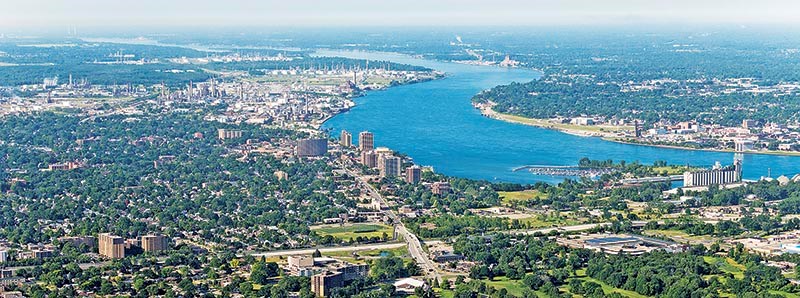George Mathewson
Two discharges of partially treated sewage to the St. Clair River in September are a reminder that the largest infrastructure project in Sarnia’s history isn’t done yet.
Sarnia has managed to shed its reputation as the worst water polluter on the Great Lakes, thanks to $70 million being spent so far replacing antiquated sewers - $28 million of it local dollars.
But that improvement didn’t cut it with our downstream neighbours to the south following two discharge “bypasses” at the Water Pollution Control Plant in one week.
The Chatham-Kent Public Utility Commission asked for an official explanation, noting the Environment Ministry issues frequent alerts about sanitary sewage bypasses in Sarnia.
“This has to stop,” PUC chair Jeff Wesley told the Sydenham Current.
On Sept. 1, a power failure at the St. Andrews Street plant resulted in a release of about 5,302 cubic metres of effluent to the river, enough to fill two Olympic-sized swimming pools.
Though the water had been cleaned it hadn’t gone through the final disinfection using ultraviolet light.
Then on Sept. 5, heavy rains forced about 630 cubic metres to the river over a seven-hour period, water that bypassed both secondary treatment and the final disinfection, according to a city staff report.
Wastewater that has undergone only primary treatment is still pretty dirty stuff.
Sarnia’s problem, like that of many Great Lakes cities, is something called a combined sewer system.
The combined sewers in the older part of town collect both rainwater runoff and domestic sewage in the same piping system. Most of the time, it’s safely transported to the plant, treated and released to the river.
But during periods of heavy rain or snowmelt the volume can exceed capacity, forcing the system to overflow. Combined sewer overflows, or CSOs, mix storm water with untreated human waste, toxic materials and debris, which enters the river and can surge up through basement drains.
I can say from firsthand experience that watching a basement fill with a rising flood of human excrement is not a pleasant sight.
But Sarnia has come a long way.
Since 2004, 16 of 39 kilometres of combined sewers have been replaced with separated sewers. And the newer sewers to the north and east, which fed into to the old system, have been partially rerouted.
The Exmouth and East street drainage areas – as weary motorists know – were completed in 2009 and 2012 respectively, and the Devine and Talfourd area work is in progress.
The result is zero CSOs since 2010, although, as Chatham-Kent knows, bypasses of partially treated water do still occur.
Things are improving, slowly, and at great cost. But the day when no sewage at all gets into the river can’t come soon enough.
